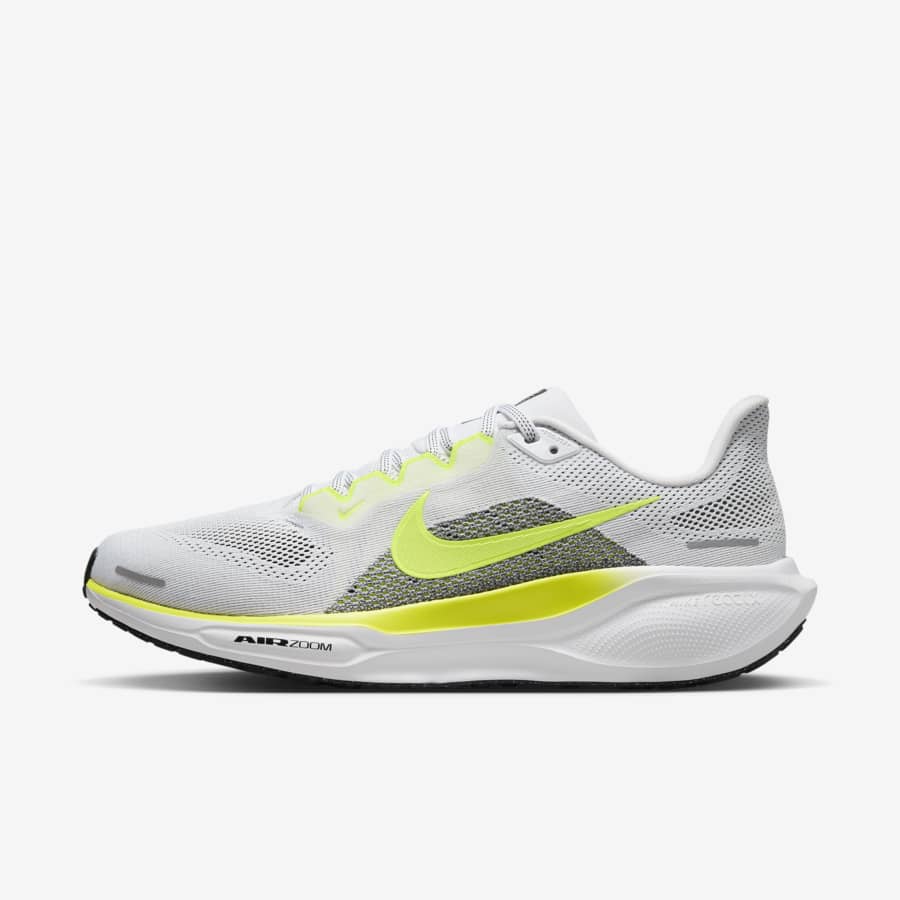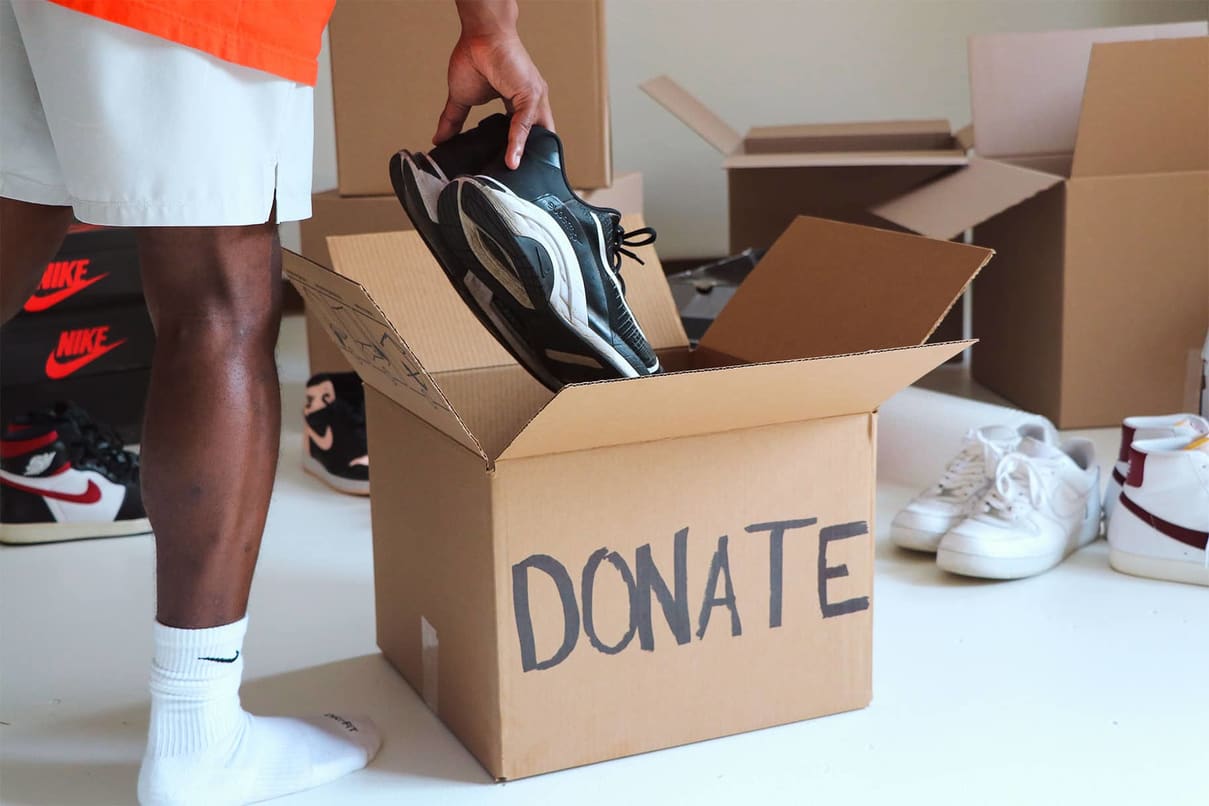Introduction to Breaking in Climbing Shoes
Breaking in new climbing shoes can be a vital step for climbers. Brand new shoes often fit very tightly and can be painful at first. This period allows the shoes to mold to the feet’s shape, enhancing comfort and performance. The best way to break in climbing shoes combines wearing them in controlled conditions and subtle physical manipulation.
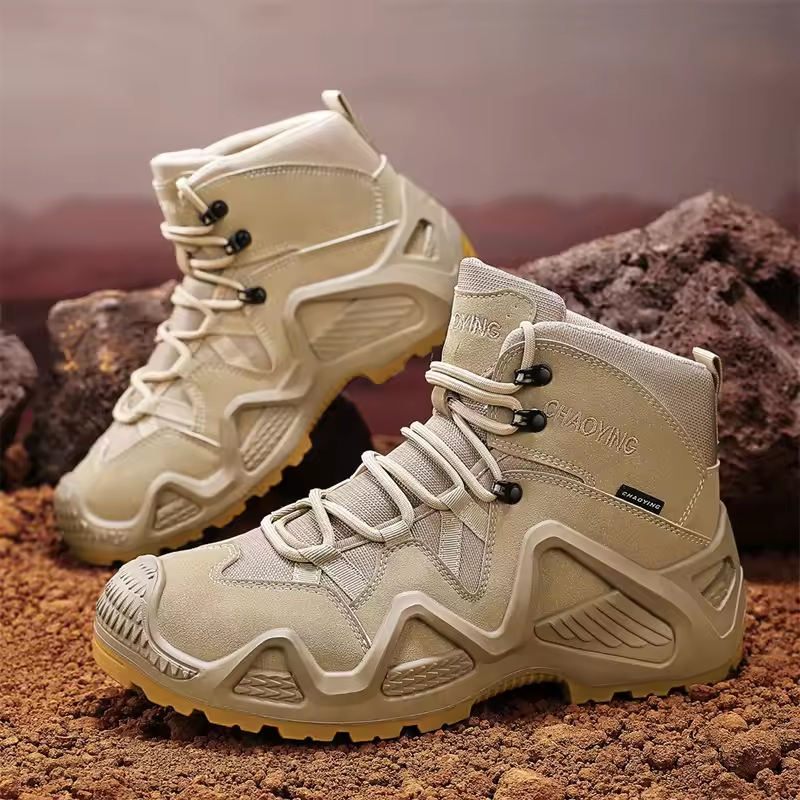
Start by wearing the shoes for short intervals at home. Gradually, the shoes will stretch and take on the shape of your feet. Remember, the fit of your climbing shoes strongly impacts your ability to climb effectively. Shoes that are too tight may hinder movement and cause pain, while loose shoes may not offer the precision needed for climbing. Hence, finding the equilibrium is key.
There are several approaches you can take to break in your climbing shoes. These range from natural wear to using heat or manual stretching techniques. Each method has its benefits and drawbacks, and they can vary depending on the shoe’s material and design.
Throughout this guide, we will explore various exemplary methods that can be considered the best way to break in climbing shoes. We’ll cover how heat can aid the process, manual techniques to stretch the shoes, wearing tips, and when to seek professional help. Stay tuned to ensure your climbing shoes are primed for your next ascent.
Importance of a Proper Fit in Climbing Shoes
Getting the right fit in climbing shoes is crucial for several reasons. First, it directly affects your comfort while climbing. Shoes that fit poorly can lead to blisters, crushing pain, or numb toes. All of these can distract you from focusing on your climb. A proper fit also determines the level of support and stability your feet have on the rock.
Secondly, the precision of your footwork depends on well-fitting shoes. Climbing often requires placing your feet on small edges and pockets. With a close, snug fit, you can feel the rock better and make precise moves. Otherwise, a loose shoe may lead to slips that could have been avoided.
Lastly, a good fit helps in the long-term health of your feet. Consistently wearing climbing shoes that are too tight can cause issues like bunions and hammertoes. On the other hand, shoes that are too large fail to protect your feet from the stress of climbing. A well-fitted shoe should enable maximum performance while preventing potential foot problems.
When searching for the best way to break in climbing shoes, keep in mind that a proper fit from the start helps in breaking them in more efficiently. The breaking-in process adapts shoes that fit ‘just right’ to become shoes that feel like a second skin. This process should never attempt to compensate for a fundamentally poor fit. Take the time to find shoes that offer the initial proper fit, as this will set you up for success in your climbing endeavors.
Different Methods for Breaking in Climbing Shoes
Finding the best way to break in climbing shoes involves various techniques. Different methods can help ease the tight fit of new shoes. Given your quest for comfort and performance, considering multiple approaches is wise. Here are a few tested methods to make those new climbers feel great.
Gradual Wear
The simplest method is to wear your shoes regularly. Start with short periods around the house. Slowly, increase the time you keep them on. Over time, the shoes will stretch slightly and take the shape of your feet. Be patient with this process. Your shoes will become comfortable without damaging the material.
Heat Application
Applying heat can help in breaking in climbing shoes. Warm up your shoes with a hairdryer. Be careful to avoid overheating as it could damage the shoes. After warming them, put on thick socks, then the shoes. The heat will make the material more pliable. Do a few stretches or walk around to aid the stretching. Remember to go gently to prevent any harm to your shoes.
Shoe Stretchers
Manual stretching with shoe stretchers is another option. Insert shoe stretchers into your climbing shoes overnight. This method helps in gently expanding the tight areas. Ensure the stretchers are not too large. They should not overstretch or deform the shoe. Always check the fit the next morning and repeat if necessary.
Freezer Technique
Another unconventional method involves the freezer. Fill bags with water and place them inside the shoes. Put the shoes with bags into the freezer. As water freezes, it expands. This expansion can help to stretch the shoes. Again, caution is paramount. Freezing can damage certain materials. Research your shoe’s compatibility before trying this.
Consider these various methods and find what works best for you. Remember, breaking in shoes is a gradual process. Avoid rush and extreme measures. The goal is to achieve the perfect fit, with both comfort and climbing efficiency in mind.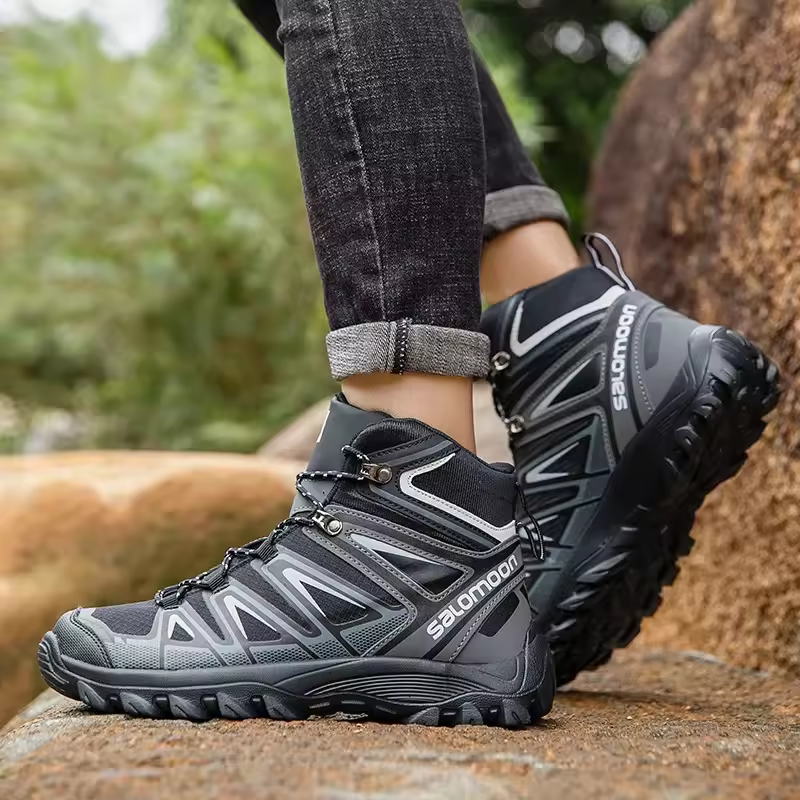
The Role of Heat in Expanding Climbing Shoes
Expanding your climbing shoes with heat is a popular method. Heat makes materials more flexible. This allows for easier stretching to conform to your feet’s shape. In essence, heat application hastens the break-in process. Here’s how to use heat effectively:
Using a Hairdryer
Start by warming the shoes with a hairdryer. Keep the dryer moving to avoid overheating any spot. Heat your shoes for a couple of minutes. After heating, wear thick socks, then put on the shoes. Walk around to stretch the material. As you move, the shoes adjust to your feet’s contours.
The Warm Water Soak
Another technique is to soak your shoes in warm water. Do not use hot water. It may damage the glue or material. Submerge your shoes for a few minutes. Then, wear your shoes as they dry for a custom fit. Again, use thick socks to protect your feet.
Precautions to Take
Always monitor the temperature. Excessive heat can ruin your shoes. Focus heat on tight areas but don’t overdo it. Gradual heat application is best to prevent damage. Let your shoes cool down and readjust between sessions. Patience is key in the heating method.
Heat can work wonders for breaking in climbing shoes. But use it wisely. Always test a small area first. This way, you avoid potential damage. Combine heat with other methods for the best results. Never sacrifice shoe integrity for a quick break-in. Keep comfort and durability in balance.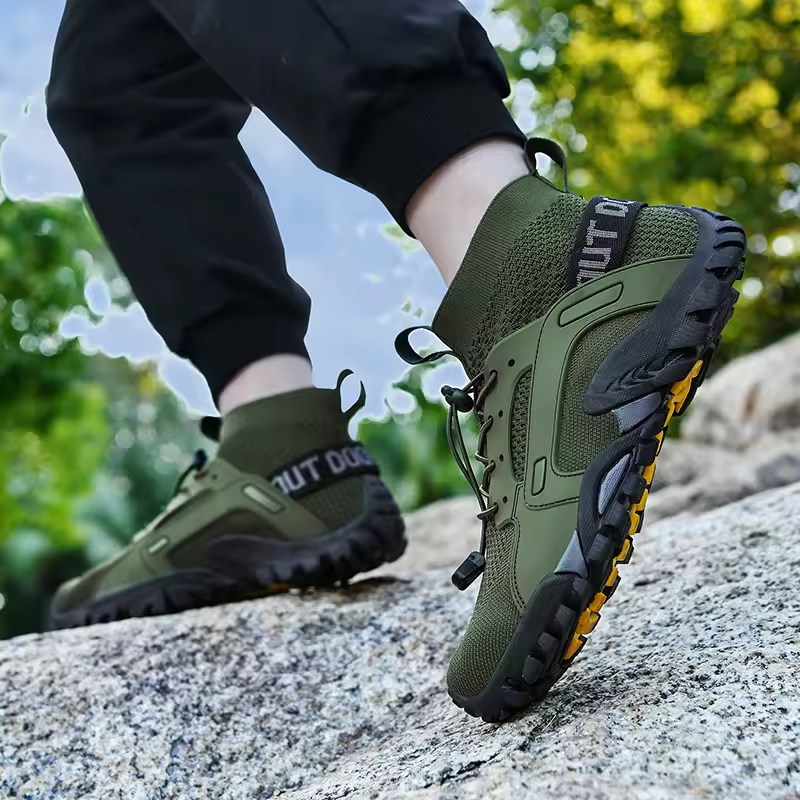
Manual Stretching Techniques for Climbing Shoes
Finding the best way to break in climbing shoes sometimes involves manual stretching. This approach directly targets tight spots. Let’s dive into a couple of manual techniques that can help.
Using Your Hands
You can use your hands to gently stretch the material. Focus on areas that feel extra snug. Pull and hold each area for some seconds. Repeat this throughout the shoe. This method is helpful for minor adjustments.
The Ball and Ring Stretcher
This is a specific tool for stretching. It focuses on localized areas like the toe box. You place it in the tight spot and then expand it slowly. It performs well for targeted stretching. Use it carefully to prevent overstretching.
The Wooden Shoe Stretcher
A more traditional option, the wooden shoe stretcher fits inside your shoe. It applies even pressure throughout. It’s great for a general stretch. Turn the lever slightly daily. Never force it, as your shoes could get damaged.
Adopt these manual stretching techniques as part of your break-in strategy. Combine them with wearing and heating methods for a comprehensive approach. Remember to go slow and assess fit regularly. Your goal is comfort coupled with performance. Heed these steps and your climbing shoes will be ready for many climbs to come.
Tips for Wearing Climbing Shoes at Home
Breaking in climbing shoes at home is both convenient and effective. Here’s how to do it safely:
Start with Short Sessions
Begin by wearing your shoes for brief periods while at home. Aim for 10-20 minute sessions at first.
Increase Time Gradually
As your feet adjust, slowly add more time. Extend wear to up to an hour or more.
Mimic Climbing Movements
Perform climbing footwork on stairs or a textured surface to simulate actual use.
Use Thick Socks
Wear thick socks to protect your feet and to help stretch the shoes’ material slightly.
Be Patient and Attentive
Pay attention to any discomfort. If pain occurs, reduce the session’s time or frequency.
Adopt these simple wearable tips and you’ll have climbing shoes formed to your feet in no time.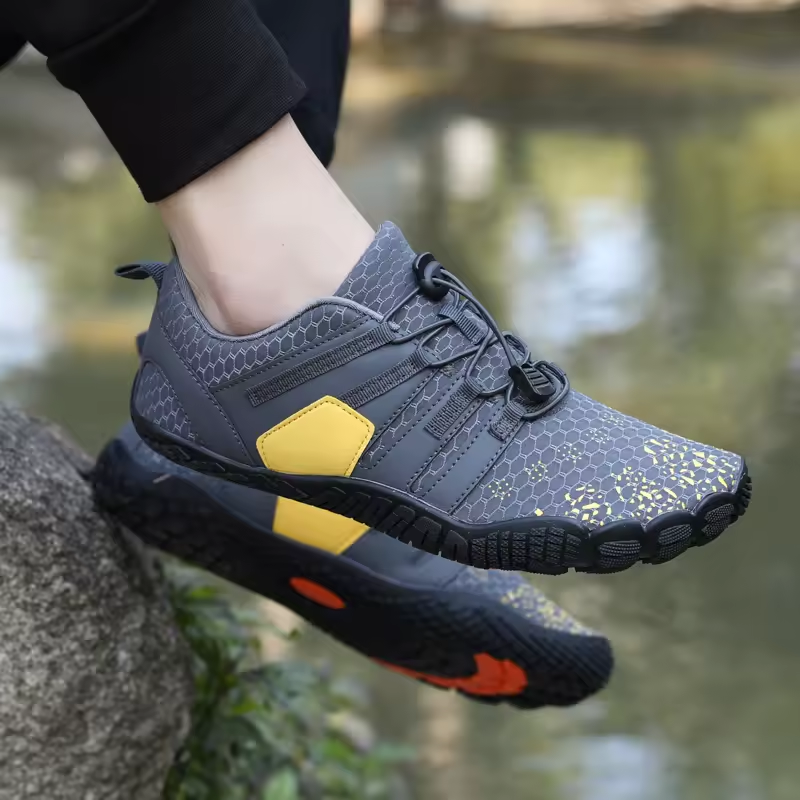
When to Use Professional Services for Shoe Stretching
Sometimes, despite your best efforts, your climbing shoes may not break in as you’d like. This is where professional shoe stretching services come into play. Here are scenarios when seeking expert help makes sense:
Persistent Discomfort After DIY Methods
If you’ve tried all the DIY methods, like gradual wear, heat application, and manual stretching, but still experience discomfort, it might be time for professional assistance. Professionals have specialized equipment and techniques that can delicately stretch your shoes without damaging them.
High-End Climbing Shoes with Tough Materials
Some climbing shoes are made with materials that are particularly resistant to stretching. If you own a high-end pair crafted for durability, professional services can skillfully expand them. This ensures your investment is protected while tailoring the fit to your needs.
Localized Fit Issues that Require Targeted Stretching
When specific areas of your shoes are too tight — for example, the toe box or heel — a professional can precisely adjust those regions. They have tools designed to stretch particular parts of a shoe while leaving the rest intact.
Time Constraints and Need for Speedier Break-In
If you’re short on time and need your climbing shoes ready for a fast-approaching climbing trip, professional stretching can expedite the process. They can often provide quick turnaround times without sacrificing the quality of the stretch.
Lack of Confidence in Personal Stretching Techniques
It’s perfectly normal to feel hesitant about stretching your own climbing shoes. If you’re worried about causing irrevocable damage, professionals are your go-to. They bring experience to the table that ensures a correct and safe stretch.
In any of these situations, remember to communicate your needs clearly and discuss any concerns about the stretching process. With their help, you can achieve that perfect fit, ensuring your climbs are safe, comfortable, and successful.
Caring for Your Climbing Shoes Post-Break-In
After finding the best way to break in climbing shoes, proper care is next. Maintaining your shoes extends their life and keeps them comfortable. Here are tips for post-break-in care.
Keep Them Clean
Dirt and grime break down shoe materials. Clean your shoes with a soft brush and mild soap. Rinse them well and air dry away from direct sunlight. Avoid washing machines; they can harm your shoes.
Store Properly
Don’t cram your shoes into your bag. This bends them out of shape. Instead, store them flat or on a shoe tree. Keep them in a cool, dry place to prevent material breakdown.
Check for Wear
Regularly inspect your shoes for signs of wear. Look at the rubber, the seams, and the straps. Catching damage early means easier repairs. It also ensures your shoes stay safe for climbing.
Use a Shoe Deodorizer
Climbing shoes can get smelly. Use a natural deodorizer to keep odors at bay. This preserves the shoe’s interior and keeps your feet fresh.
Repair Damage Promptly
If you spot tears or loose rubber, fix them quickly. A good cobbler can extend your shoe’s lifespan with skilled repairs.
Following these simple care steps will help your climbing shoes last longer. Take care of your shoes, and they’ll take care of you on your climbs.
